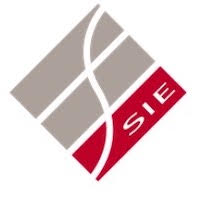 Smart Citations
Smart CitationsSee how this article has been cited at scite.ai
scite shows how a scientific paper has been cited by providing the context of the citation, a classification describing whether it supports, mentions, or contrasts the cited claim, and a label indicating in which section the citation was made.
Response of non-differentiated pulp cells (OD-21) to a novel bioceramic for dental pulp capping
Aim: To evaluate an experimental bioceramic (QCP5) effect on undifferentiated pulp cells (OD-21 cell lineage).
Methodology: Cells were divided into three groups: control (untreated cells), QCP5 (cells in indirect contact with biomimetic ceramic (QCP5), and Mineral Trioxide Aggregate (cells in indirect contact with [MTA]). Cell viability, biochemical ALP activity, fast red in situ, and mineralization were evaluated. The proteins Alp, Col1A1 and DMP1 were detected by immunofluorescence. The data were analyzed by a variance analysis with 5% significance level.
Results: The cell viability test at 3 and 7 days was similar between the groups, but at 10 days there was a significant increase in both the MTA and the QCP5 groups. It was observed that at 3 and 10 days there was no significant difference in ALP activity, but at 7 days the expression of ALP was greater in the control group compared with QCP5 and MTA exposure groups. The fast red technique at 3 and 10 days showed no significant difference, but at 7 days it was significantly lower for the control group compared with QCP5 (P=0.0477) and MTA (P=0.0217). Mineralization was significantly higher in the control group (P=≤0.0001). ALP protein marking was similar in all three groups, Col1a1 presence was significantly decreased in the MTA group, and DMP1 was more marked in the QCP5 group.
Conclusion: The bioceramic QCP5 promoted cell viability, expression of ALP, mineralization and expression of proteins ALP, Col1a1, and Dmp1. Similar behavior was observed with cells exposed to MTA.
Downloads
Supporting Agencies
Universidad Nacional de Colombia-Sede Bogotá, São Paulo University-Brazil.How to Cite

This work is licensed under a Creative Commons Attribution-NonCommercial 4.0 International License.
Giornale Italiano di Endodonzia has chosen to apply the Creative Commons Attribution NonCommercial 4.0 International License (CC BY-NC 4.0) to all manuscripts to be published.


 https://doi.org/10.32067/GIE.2023.37.01.12
https://doi.org/10.32067/GIE.2023.37.01.12





